How to revive orchids plant? A similar question is usually asked by novice flower growers who, out of ignorance or inexperience, flooded the plant with water, which leads to the rotting of the orchid roots or minimized watering to such an extent that the flower withered. So, is it possible to do something at home to breathe life into an orchid? Let’s deal with this.
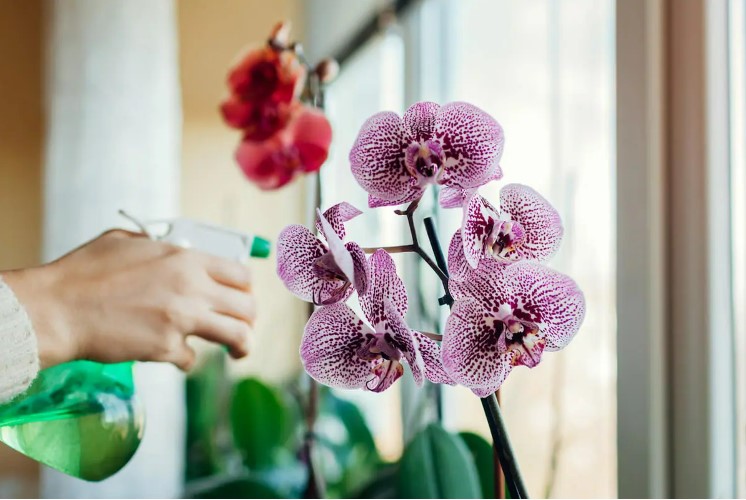
How to revive the orchid plant?
It all depends on the specific situation. You need to understand exactly what happened to the plant, and then choose the right algorithm for solving the problem, if the flower can be saved at all.
Note! The most dangerous period for orchids is autumn-winter. This is explained by a decrease in the temperature outside, which leads to the need to turn on the heating system or appliances at home. It leads to a decrease in air humidity and an increase in room temperature. Lighting also has an effect, which is usually somewhat worse in winter because daylight hours are shorter.
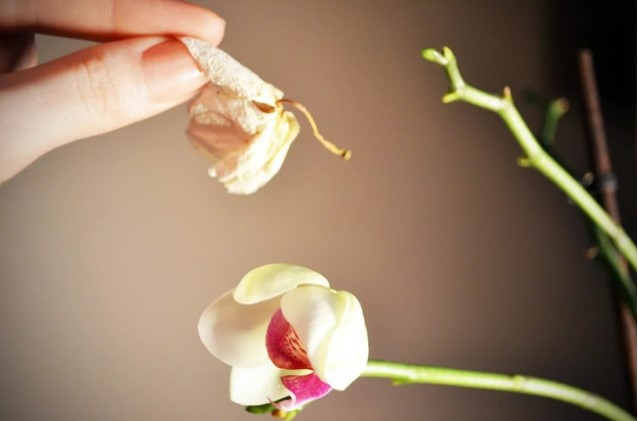
But in the warm season, most orchids feel great. They can quite easily endure the lack of a backlight, changes in humidity, and temperature changes. As a result, the grower must respond in time to the change of season and adjust the care of the plant, maintaining optimal conditions. You can learn more about how to care for your orchids.
Why are my orchids dying? Reasons for dying orchid
The reasons for dying orchid at home are very different. Usually, the grower notices that something is wrong with the plant when he discovers wilted orchid leaves. And keep in mind that if only the lower leaves wither, and the upper ones are healthy and have a dark green tint, then everything is in order.
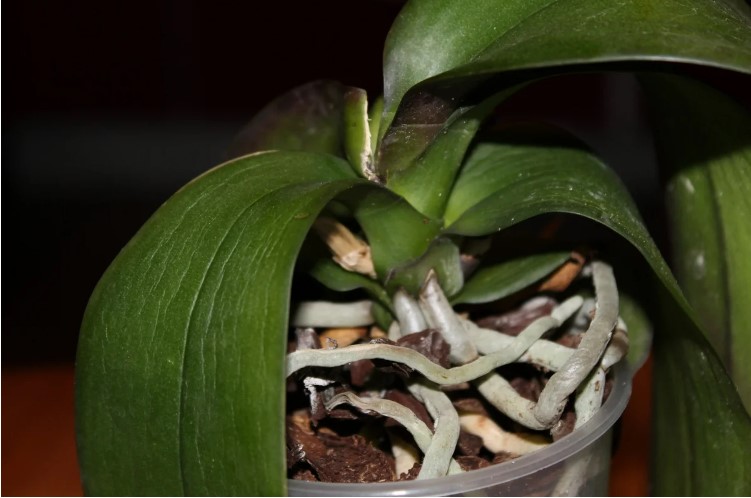
If the vegetative mass fades both from above and from below, this is a cause for concern. If you do not start correcting the situation, then the yellow leaves will quickly fall off, and the plant orchids themselves will die.
In other words, if you notice a leaf wilt, look for the cause right away.
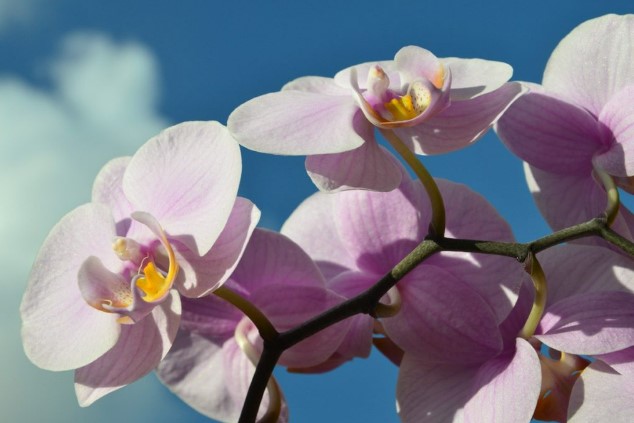
The main reasons for wilting are:
- Overheat. It is usually observed if the orchids grow in a room with a high temperature. Overheating can also be the result of direct sunlight on the plant, which leads to a rapid loss of moisture. As a result, the leaves wither, and eventually dry. There is a basic way to solve the current situation.
First, you need to move the indoor plants to a dark place and keep them there for two to three hours. Then you can wash an orchid and spray the leaves. You should not expect that the wilting orchid will immediately come to life, since this requires at least two to three days, or even more, depending on the degree of wilting.
Do not forget to take care of suitable growing conditions for the plant to prevent a recurrence of the situation in the future. - Over or under watering. In the first case, the problem is the high humidity of the potting mix, which leads to root rot. Lack of moisture leads, on the contrary, to the fact that the roots are dry.
- The amount of fertilizer used. It is necessary to monitor how much top dressing is used. Particular attention is paid to the proportions of essential substances (nitrogen, potassium, phosphorus, and other trace elements) that are contained in orchid fertilizer.
In some cases, dying orchid from an excessive amount of fertilizer because the root is poisoned. The disease manifests itself in wilting and yellowing of the leaves, discoloration of the roots, and root rot.Below is information that will tell you what to do if you see the root rot. There is almost always a chance to “revive” a plant that seems to be hopeless. - Parasites and harmful insects in the soil. Most often, parasitic beetles, are called click beetles. They feed on the roots of the plant. Treatment involves washing the roots with warm running water, treating them with pesticides, and transplanting the plant into a pot with a fresh potting mix.
Useful information! It is advisable to give preference to small and elongated clear plastic pots for growing orchids. In such containers, the substrate will dry out better between waterings, which means that the likelihood of dying orchids will be minimized.
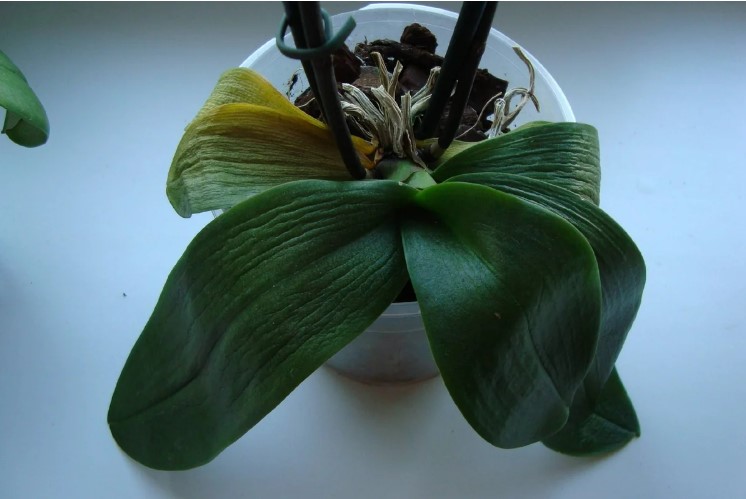
What does a dying orchid look like?
A diseased plant is characterized by yellowed leaves covered with spots. They can rot.
Also, the flower spikes are twisted or completely fall off. Flower stalks will not appear in such a culture, so they must be immediately reanimated.

How to do it right? First, carefully inspect the stems and rhizome. To do this, remove the flower from the soil and rinse it under warm water. Lay it out on a piece of paper to dry, then inspect.
Do I need to remove the peduncle for saving orchid flowers?
The peduncle successfully develops and forms the flower buds of a healthy orchid due to the roots and leaves.
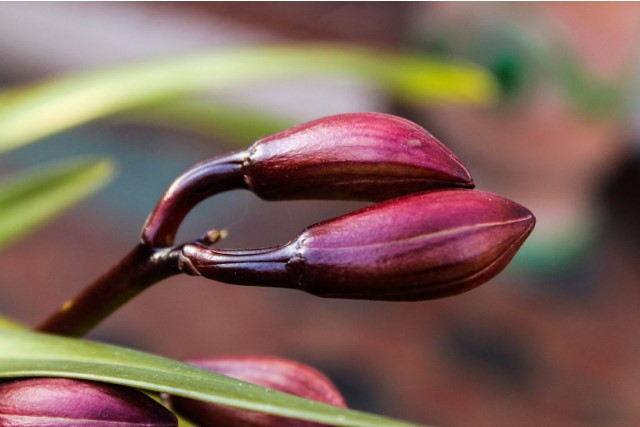
But if not everything is in order with them, then they cannot provide full development to the peduncle.
Experts advise cutting off the peduncle – depending on the state of the orchid itself. But only the apical part.
A reanimated orchid needs strength to restore roots and leaves. Then the flowers will grow.
But the plant may die. If it can not cope with the provision of the peduncle.
How do you save a dying orchid?
How to reanimate a plant with rotten, frozen, or dried roots? You can almost always solve the problem, even if the case seems hopeless. It will be possible to correct the situation if the plant was flooded, found frozen, or dried with flowers fall. The algorithm is always the same.
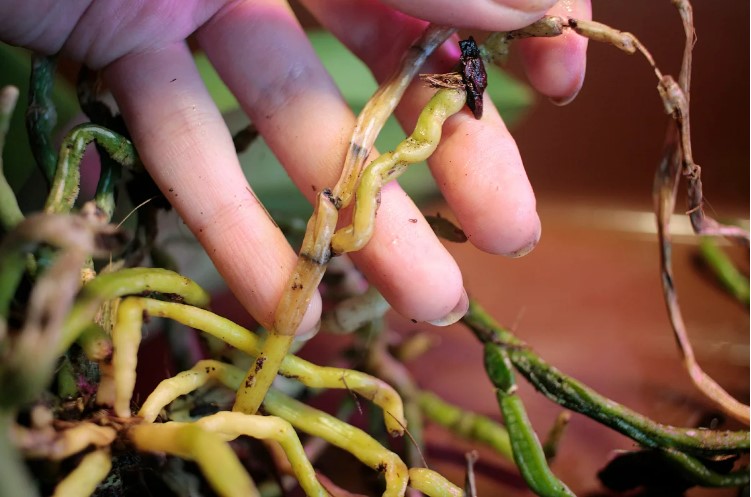
However, the sooner a problem with the root system is noticed, the more likely it is to successfully reanimate the flower. First, you need to inspect the orchid leaves to assess the degree of damage. Also, pay attention to the roots:
Healthy roots are quite fleshy, dense, and elastic.
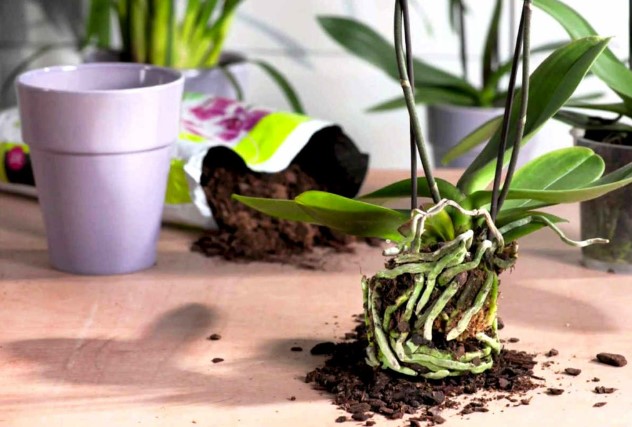
Their color depends on the age of the flower: young ones are light green, old ones are gray or brownish. If the plant has not been watered for a long time, the root system will be almost white, and after watering – rich green.
If the roots nourish the plant, they will be smooth, hard, and dry.
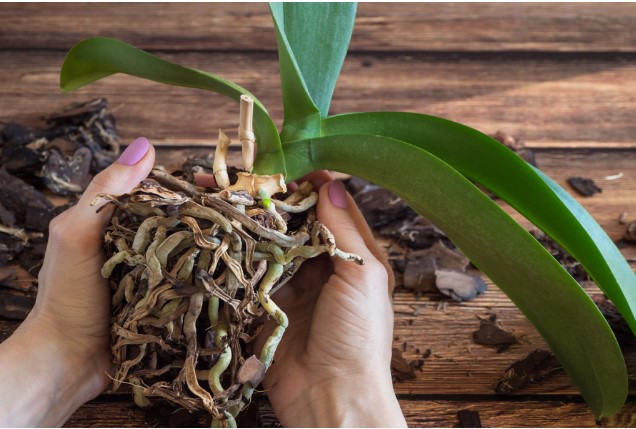
It is most convenient to examine the roots by removing the potting medium and washing the underground part of the plant. So, decay will be evidenced by:
- Darkening of the root system.
- When you press the root, the liquid will flow.
- The roots have a collapsed and filamentous appearance.
- Diseased roots have slimy and weeping areas.
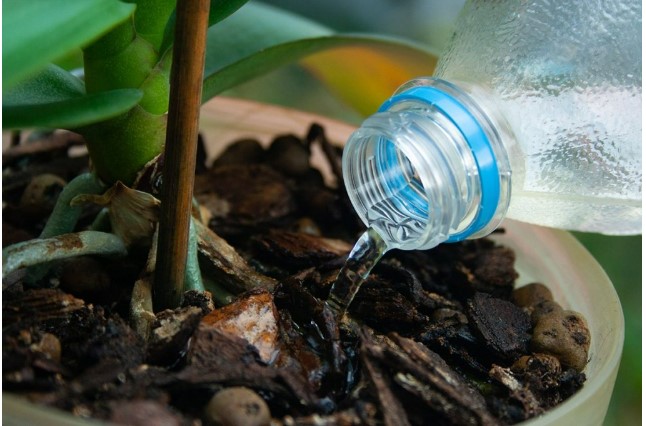
It is important! Dried roots will be visible immediately. They will become dry and brittle.
Rotten and dried, unhealthy roots cannot be saved. They need to be cut with a sharp disinfected device. You need to trim to capture a small part of healthy tissue. The viability of the plant, which will be properly cared for in the future, will not be affected by pruning.
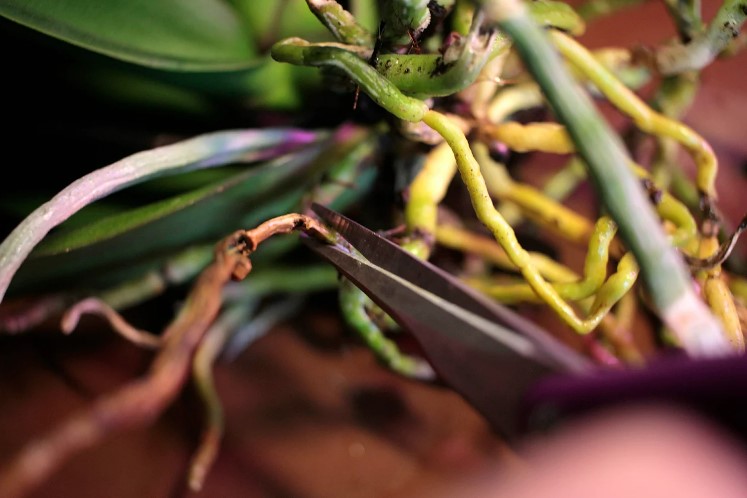
Then let the roots dry. After that, you can immerse the root system in the fungicide solution for about 10-15 minutes to protect the plant from damage by harmful fungi. Healthy areas are treated with growth stimulants to speed up the growth of the root system and take care of increasing immunity to diseases.
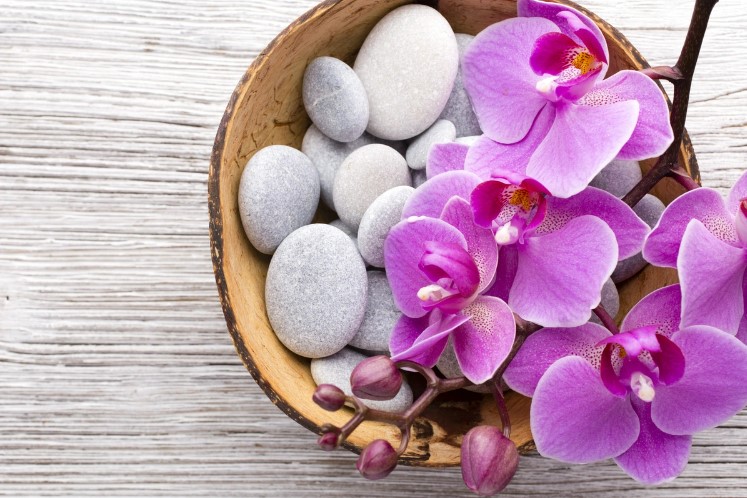
Orchid left without roots
What to do if the orchid dried up or rotted and was left without roots? This question arises for those flower growers in whom the orchid species have lost almost the entire root system. Even in this case, there is a chance to restore the plant with proper care and patience. There are three main ways to revive:

With the help of a greenhouse
It is necessary to take a container in which the flower will be rooted, first pour a thin layer of expanded clay into it, and then peeled sphagnum moss (it is advisable to steam it first). Then you should place the root rosette in the prepared container and install it in the greenhouse.
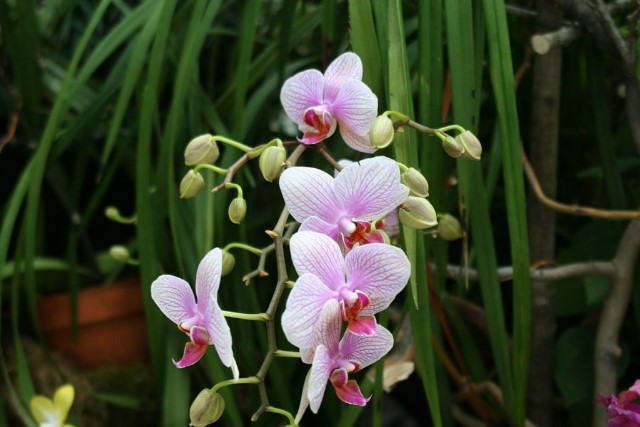
The first roots with proper care will appear after 10-14 days. It is possible to transfer an orchid to its usual conditions (planted in a pot with a substrate and removed from the greenhouse) no earlier than roots 3-4 cm long are formed.
Regular watering and drying of orchid roots
You will need a deep glass vessel, into which you need to lower the pre-treated (cut off from rotten roots and with processed cuts) sheet rosette. Every day, water must be poured into the container, and so that the outlet only touches the water, and the leaves remain unaffected.
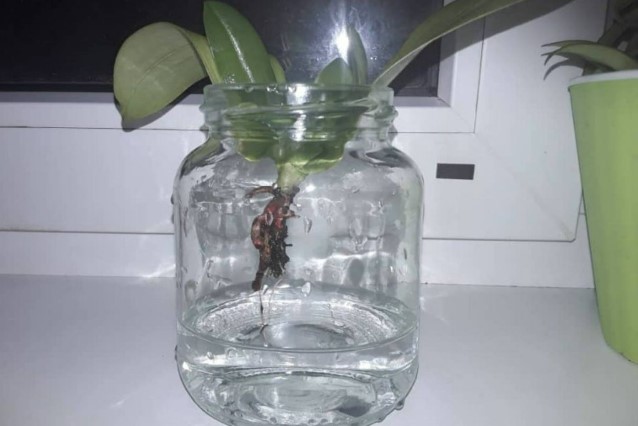
In this form, the plant is left for six hours. Then the water is drained, and the flower is left to dry until the next morning. Then the procedure is repeated. So you can calculate how to grow orchids in water.
Using a common substrate
The diameter of the container should be about 6-8 cm. You can use an ordinary substrate. But it must be fresh.
It is very important to choose the most efficient way. First, you need to assess the condition of the plant. This depends on the duration of the rehabilitation.
On average, a flower that has lost up to 60% of the root system will need at least one month to recover.
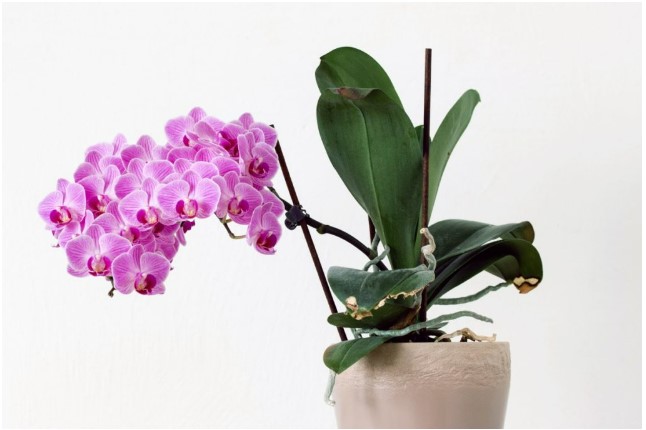
Read also: Healthy orchid roots
How do you get an orchid to bloom again? Orchid care after “revival”
The plant must be watered very carefully. It is advisable to use the method of irrigating the top layer of the substrate, or pour water (a little) into the pan and place the pot with the plant in it for 20-25 minutes.
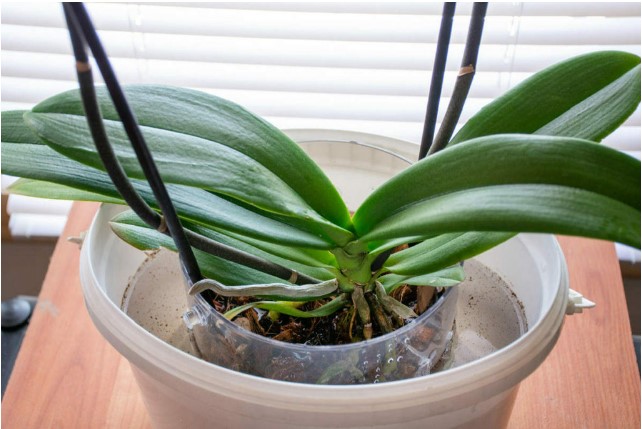
It is better to refrain from top dressing for at least one month after the “revival” so that the flower does not react negatively to the fertilizer.
During watering, you can control whether there are pests on the plant. From moistening the root system, they will crawl up the stem. When they are found, you need to change the substrate in the pot and treat the roots of the plant with a fungicide.
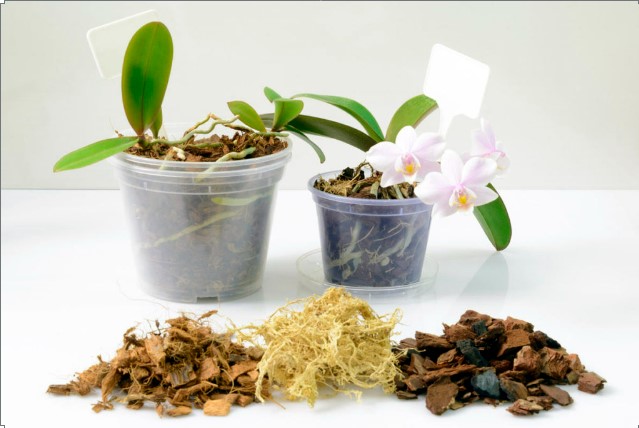
Orchid health depends on the quality of the substrate. Use only good and not too dense soil.
Maintain comfortable conditions: temperatures between 68-77ºF, humidity at 30%-40%, lighting for at least 10-12 hours every day.

Read also:
How do you transplant a string of hearts plant?
1. Choose a pot slightly larger than the current one, with good drainage.
2. Fill the pot with well-draining mix.
3. Gently remove the plant from its pot, without damaging roots.
4. Trim damaged roots, if necessary.
5. Place the plant in the new pot and adjust soil around roots.
6. Water thoroughly, allowing to drain completely.
7. Place in bright, well-lit location with moderate temperatures.
Do string of hearts need big pots?
No, string of hearts (Ceropegia woodii) do not need large pots. They can be grown in small, shallow pots with good drainage, as long as the soil is well-draining. Over-potting can lead to water-logging and root rot, so it is best to choose a pot that is only slightly larger than the root system.
Does string of hearts like to be root bound?
String of hearts (Ceropegia woodii) can tolerate some degree of root binding, but they will perform best in a pot that allows for proper root development. Over time, the roots can become pot-bound and start to choke themselves. It is best to repot the plant every 2-3 years, or when the roots become visibly crowded in the pot, to promote healthy growth.
Should I propagate string of hearts in water or soil?
String of hearts (Ceropegia woodii) is typically propagated in soil, not water. To propagate the plant, you can take stem cuttings with a few leaves and plant them in well-draining potting mix. Keep the soil moist and provide bright, indirect light until roots have formed and new growth appears. Propagating the plant in water can lead to root rot and is not recommended.
Does string of hearts need full sun?
No, String of Hearts (Ceropegia woodii) prefers bright, indirect light, but not full sun. Direct sun can scorch the leaves and damage the plant. Place the plant near a bright window with filtered light or under grow lights, if necessary. Avoid low light conditions, as this can slow growth and cause the plant to become leggy.
